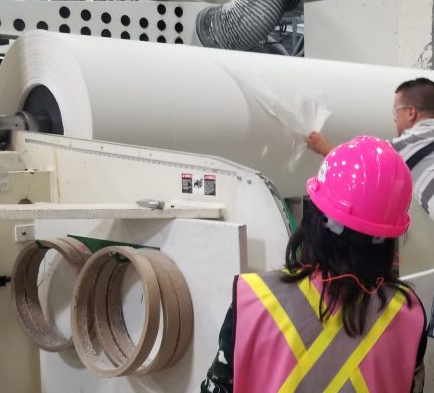
Features
Paper
Research & Innovation
Test & Measurement
Tissue
The m-factor: A tool for improving tissue strength uniformity
The m-factor is an indispensable element in the quest for maximum efficiency in tissue production
September 24, 2020 By FPInnovations

Converting base tissue from parent reels has traditionally been the bottleneck of tissue production, but as tissue makers increasingly seek out softer tissue products and meet the increasing demand created by COVID-19, enhancing tissue converting efficiency is stepping into the forefront.
Base tissue converting is the process by which reels of tissue are converted into consumer products like facial and bath tissue in a large converting line by embossing, cutting, gluing and packaging. Tissue webs can break during converting due to the poor strength and variation of the tissue properties, especially when the products are softer and bulkier.
Sheet breaks result in costly downtime, and the reality is that for many tissue mills, converting efficiency is relatively low, varying between 40-70 per cent. The low tissue converting efficiency is often a bottleneck in tissue production and represents a large potential improvement area for overall tissue manufacturing efficiency.
A solution: The m-factor
Rather than focusing on increasing overall strength of the base tissue sheets (which usually means higher cost), FPInnovations has focused on improving tissue strength uniformity.
Over years of fundamental research, FPInnovations developed the m-factor, which is a combination of unique measurement tools applied to characterize and identify tissue strength non-uniformity and relate it to tissue converting performance and efficiency.
Our recent analysis of converting plant data bases has shown a strong correlation between converting efficiency and the m-factor of the tissue base tissue sheets.
By working closely with tissue machine operators, the research team has benchmarked various tissue machines, identified the tissue machines with significant strength non-uniformity (low m-factor) and found practical ways of further increasing the m-factor through optimizing tissue machine operation.
What’s next?
We can combine the m-factor analysis with the quantification and reduction of tension variation on the rewinders to further enhance the converting efficiency of various converting lines and gain insights into why some converting lines perform better than others.
We can build on the success we have achieved with the Canadian tissue mills and expand this approach to the mills in United States and globally.
To see how you can apply the m-factor to your mill operations, you can contact Xuejun Zou or Frédéric Parent.
Print this page